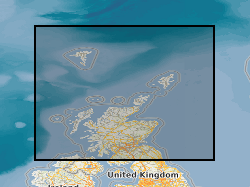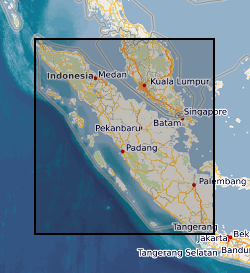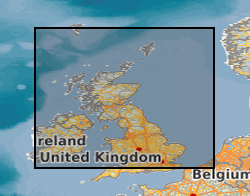1975
Type of resources
Available actions
Topics
Keywords
Contact for the resource
Provided by
Years
Formats
Representation types
Update frequencies
Scale
Resolution
-
This dataset comprises plant species, soils, habitat types and major biota present, collected during a survey of the English county of Cumbria, using standardised survey methods. The survey was undertaken by the Institute of Terrestrial Ecology (a forerunner of the Centre for Ecology & Hydrology) in 1975 within a stratified random set of sites. In total, up to 650 plots were surveyed from within 48 x 1km squares. Full details about this dataset can be found at https://doi.org/10.5285/e96b909d-d52e-4b36-bc51-905ece420794
-
The Land Classification of Cumbria is a classification of the county of Cumbria (Great Britain) into a set of 16 environmental strata, termed land classes, to be used as a basis for ecological survey, originally developed by the Institute of Terrestrial Ecology (ITE) in 1975. The strata were created from the multivariate analysis of 150 environmental variables, including topographic data, geographical features and geology data. The Land Classification can be used to stratify a wide range of ecological and biogeographical surveys to improve the efficiency of collection, analysis and presentation of information derived from a sample. Full details about this dataset can be found at https://doi.org/10.5285/0ac6249c-a6f2-4147-8ae9-50d576e85fc5
-

Results of geotechnical testing carried out, at various depth intervals, on shallow cores or boreholes collected by BGS from the UK Continental Shelf (UKCS). The bulk of the data north of 56N are in digital form and result from testing carried out onboard survey vessels using hand-held test equipment (penetrometers and shear vanes). These values are averaged for each test interval, and are expressed in kilopascals (kPa). There are approximately 6,000 test results in the dataset. Some more detailed test information, in non-digital and report form, is held for selected sites. For most sites where digital data are not available, geological descriptions of core material contain semi-quantitative information on the stiffness of the material. Geotechnical knowledge is required to understand and interpret the results if they are to be used as a basis for engineering studies. Core material is managed as part of the BGS materials collection and is available for examination, testing or subsampling. The data are stored as part of the National Geoscience Data Centre (NGDC) and the Marine Environmental Data and Information Network (MEDIN) Data Archive Centre (DAC) for geology and geophysics. Data are delivered via the 'Offshore samples: geotechnical data' layer on the BGS GeoIndex. Reference: Fannin, NGT. (1989) Offshore Investigations 1966-87. British Geological Survey Technical Report WB/89/2, British Geological Survey.
-

Regional Geochemical data from drainage basin reconnaissance survey carried out as part of a bilateral aid project between the UK Department for International development (DFID) (formerly ODA) and the Indonesian Government. Some 23,000 stream sediment samples collected and analysed (less than 80 mesh fraction) for Copper, Lead, Zinc, Cobalt, Nickel, Manganese, Silver, Arsenic, Molybdenum, Tin and Tungsten (partial extraction) and Lithium, Potassium, Chromium and Iron (total extraction). Samples collected and classified on the basis of 1:250 000 map quadrangle areas. Data gathering completed in two phases: First phase: North of the equator (North Sumatra Project, NSP). Second phase: South of the equator (Southern Sumatra Geological and mineral exploration Project). Sampling and analytical methodology has been consistent throughout. All data is available as on the Sumatra CD-database CD-ROM. North of the equator data published as 1:250 000 single element classified symbol plots and as a monochrome geochemical atlas. South of the equator data published as 1:250 000 single element proportional symbol plots and a geochemical atlas (hardcopy and CD-ROM). Projects also involved regional geological mapping and in Southern Sumatra regional geophysics (gravity). Raw data can be obtained from the Directorate of Mineral Resources, Bandung, Indonesia.
-

The concentrations of up to 30 trace elements in approximately 9,000 sea-bed samples from the UK Continental Shelf were determined by BGS using a variety of analytical techniques. In some cases samples were tested using more than one method. The analyses were carried out on freeze-dried samples of the sand and mud fractions of the samples. The data are stored as part of the National Geoscience Data Centre (NGDC) and the Marine Environmental Data and Information Network (MEDIN) Data Archive Centre (DAC) for Geology and Geophysics. Data are delivered via the BGS Offshore GeoIndex www.bgs.ac.uk/GeoIndex/offshore.htm geochemical layers. References: Stevenson, A G (2001) Metal concentrations in marine sediments around Scotland: a baseline for environmental studies, Elsevier Science; Stevenson, A G et al (1995) The geochemistry of sea-bed sediments of the United Kingdom Continental Shelf : the North Sea, Hebrides and West Shetland shelves, and the Malin-Hebrides sea area (http://nora.nerc.ac.uk/507899/).
 NERC Data Catalogue Service
NERC Data Catalogue Service